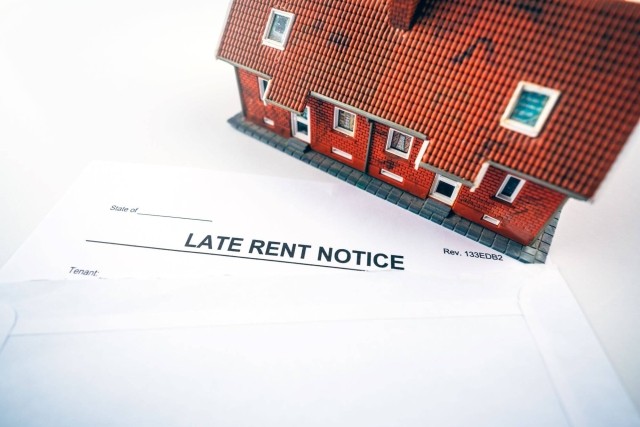Rent stabilization and rent control are two terms that are often used interchangeably. Although they have key differences, they both essentially work to keep housing affordable for renters by regulating rental prices. Let’s dive into the differences between the two terms, their pros and cons, and answer any additional questions you may have on rent regulations as a property owner or manager.
What’s the Difference Between Rent Control and Rent Stabilization?
Rent control and rent stabilization are two types of rental regulation with different operations and impacts on landlords and tenants. Rent control is an older system established during the post-World War II housing shortage. It imposes strict limits on rent increases, potentially limiting profits and discouraging investment in rental properties. Under rent control, tenants are considered permanent and do not require a lease. On the other hand, rent stabilization is a more flexible approach. It still regulates rent costs but allows for increases of a fixed amount determined by local authorities. Rent-stabilized tenants have leases. In summary, rent control and rent stabilization aim to maintain affordable housing. Rent control locks in rental rates, while rent stabilization allows for controlled increases.
What Is Rent Stabilization?
Rent stabilization is a regulation that permits a small increase in rent per year that’s set by local ordinances. The purpose of rent stabilization is to prevent rentals from becoming too expensive for the current tenants occupying the unit. These laws vary by municipality, meaning that they are regulated by state law, not federal law, so you won’t find rent stabilized properties in every state. In fact, very few states recognize rent regulations, so you will mostly find them in densely populated areas like New York City or Los Angeles. However, rent stabilized apartments are more commonly found nationwide than rent controlled apartments. Apartment buildings and tenants must meet several qualifications to be considered for rent stabilization:
- The building must have been constructed before 1974
- The building must have six or more units
- The rent must be less than $2,700 a month (in New York City).
- The tenant must earn less than $200,000 a year.
What Is Rent Control?
Rent control is a regulation that mandates that the cost of rent must stay the same indefinitely. If you own a rent-controlled apartment, it’s not within your legal rights to increase rent at the end of a lease term. The tenants of a rent-controlled unit can continue to renew their lease without the worry of a spike in the cost of rent or being given a notice to vacate after their lease ends. Keep in mind that rent-controlled apartments are few and far between and are decreasing with every coming year. This is because the rental and the tenants must meet specific criteria in order to qualify for rent control. These qualifications include:
- The building must have been constructed before 1947.
- The building has been occupied by the same family since 1971.
- Tenants can only pass down their rent-controlled apartment to family members.
- The tenant’s family member (the individual inheriting the rental) must live in the apartment for at least two consecutive years before ownership can transfer to them.
What Are the Pros and Cons of Rent Regulations?
There are benefits and drawbacks to rent regulations for both renters and landlords. Although rent stabilization and rent control have important differences, they both fall under rent regulations, making their pros and cons similar.
The Pros of Rent Regulations
There are obvious benefits to rent regulations, including:
Affordable housing
Rent-controlled and rent-stabilized apartments provide affordable housing to those who need it. Renters’ incomes may not be able to compete with the rising rent in metro cities, so rent regulations allow them to maintain housing without worrying about affording their rent every month or when rent inevitably rises every year.
Increase in housing stability
Renters who live in rent-stabilized or rent-controlled apartments are less likely to leave their current homes, and long-term tenants are more likely to care about the neighborhood they live in, meaning they want the neighborhood to be a safe, enjoyable place to live. There is a greater chance they will become members of the community rather than just short-term residents. As a landlord, this means less turnover and less time spent searching for new tenants.
More lease renewals
With rent-regulated apartments, renters can renew their lease at every lease end. This prevents landlords from having to find new tenants and keeps renters from having to find a new apartment after every lease when the rent goes up. If the tenant pays rent on time and abides by the lease terms, the landlord may feel relieved they don’t have to find a new tenant when the lease ends.
The Cons of Rent Regulations
The cons of rent regulations are more relevant to property owners and managers and include:
Less profit for property owners
Landlords won’t make as much rental income from rent-regulated apartments as they would for rentals listed at market price. Because landlords either can’t increase rent at all or can only increase it by a small, standardized amount, a rent-regulated rental isn’t ideal for them financially.
No new renters
Because properties that are rent controlled or rent stabilized are hard to come by, it’s unlikely a renter will choose to leave your affordable rental for another. This could be troublesome for the landlord if the renter isn’t necessarily a good tenant. You will have to offer the tenant a lease renewal until they decide to move on their own, so you won’t be able to replace them after one lease term with a new tenant (unless they break the lease and give legal reason for eviction).
Less incentive to maintain the property
A landlord who owns a rent-regulated apartment will likely still maintain their responsibility by keeping the unit habitable, but there isn’t much financial benefit to renovating the unit when the rent won’t increase to reflect the upgrades.
Commonly Asked Questions About Rent Stabilization and Rent Control
If you’re left with more questions about rent regulations, you’re in the right place.
Are there exemptions to rent control?
Certain properties are exempt from rent control and rent stabilization. The statutes vary by state, but examples include rentals owned by a government agency and units that were built after 1975. Check your state laws to get the specifics for your area.
How can I find policies specific to my state?
The best way to find state specific policies on rent regulations is to visit the U.S. Department of Housing and Urban Development webpage and find your state page. You should be able to find specific information about rent control and rent regulation in your area.
Is rent control a good thing? Does it actually help renters?
Rent control can be a great thing for renters in expensive metro areas who can’t afford market price housing. Although rent regulations don’t necessarily benefit the landlord, they are great for renters and have benefits for the community as well.
How can a rent-stabilized apartment become destabilized?
If a rent-stabilized apartment becomes vacant, it will become destabilized, and the landlord is legally allowed to set the rent however they see fit, typically around market price. Check your state laws on the matter to see how your rent-stabilized apartment can become destabilized and potentially more profitable for you.
What’s an example of rent control?
The most well-known types of rent control will be found in New York City, where a large (but continuously decreasing) number of apartments are protected by rent regulations, meaning the cost of rent can’t rise above a certain amount.
Collect Rent with Apartments.com
Our platform provides free online rent collection so you can receive rent payments safely and securely. Get access to automated reminder emails, late fees, and documents for tax filing, and give tenants the flexibility to pay rent how they want. With our streamlined process, rent payments have never been easier.











